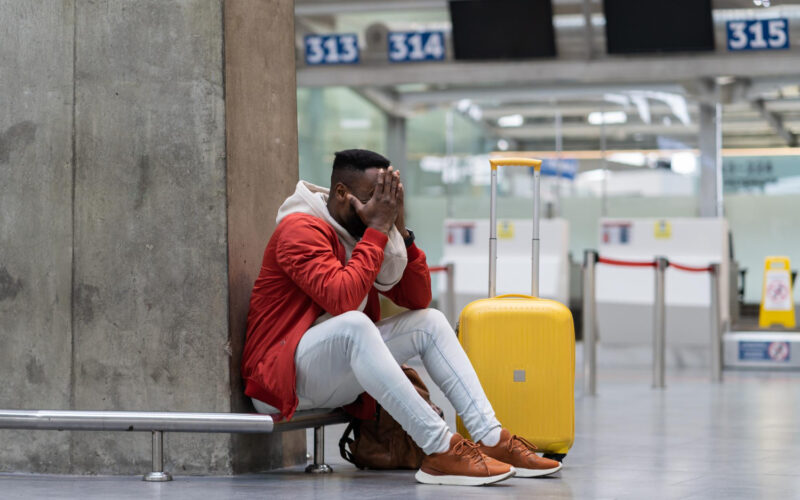Understanding the strategies used in these typical scams and taking proactive measures to protect yourself can help you reduce your risk of encountering them while traveling, resulting in a safer and more enjoyable experience.
1. THE DISTRACTION TECHNIQUE
- – How it works: Scammers operate in pairs or groups, with one person creating a distraction while the other steals your belongings. Distractions can range from asking for directions or offering to take a photo to staging a fake argument or performance.
- – Where it happens: Tourist hotspots, crowded markets, public transportation, and busy streets are prime locations for this scam.
- – Preventive measures: Keep your valuables secure and out of sight, carry a crossbody bag with a secure latch, and avoid displaying expensive items such as jewelry or electronics in public.
2. OVERPRICED TAXI RIDES
- – How it works: Some taxi drivers may overcharge visitors, take longer routes, or refuse to use meters.
- – Where it happens: This scam is commonly carried out at airports, train stations, and tourist areas.
- – Preventive measures: Before getting into the cab, look up conventional taxi fares, agree on a fare or insist on using the meter, and think about using reputable ride-sharing services.
3. FAKE POLICE OFFICERS
- – How it works: Scammers impersonate police officials and approach travelers with charges of counterfeit money, manufactured violations, or requests for identification.
- – Where it happens: Tourist areas, transportation hubs, and crowded streets are typical locations for this scam.
- – Preventive measures: Ask for official identification, be aware of uniform differences or unmarked vehicles, and seek assistance from a nearby embassy or consulate if necessary.
4. BOGUS TOUR GUIDES:
- – How it works: Bogus tour guides prey on unsuspecting travelers by offering unauthorized or substandard tours. These individuals often lack the necessary licensing, expertise, or professionalism needed to deliver a quality experience. As a result, tourists may find themselves subjected to misleading information, rushed itineraries, or unexpected expenses, detracting from the overall enjoyment of their trip.
- – Where it happens: Tourist sites, landmarks, and prominent sightseeing spots are prime targets for fraudulent tour guides. These opportunistic individuals intentionally place themselves in high-traffic tourist areas, allowing them to readily approach potential clients and sell their services.
- – Preventive measures: When arranging tours, consider booking through your hotel or a trusted travel agency like 247Travels. By leveraging on our expertise and established network of partners, you can access vetted tour operators and enjoy added peace of mind knowing that your interests are protected.
5. ATM SKIMMING
- – How it works: Criminals install devices on ATMs to steal card information and PINs entered by unsuspecting users. This stolen data is then used to clone cards and gain unauthorized access to bank accounts, leaving users vulnerable to financial loss and identity theft.
- – Where it happens: ATMs situated in tourist areas, airports, and poorly lit or isolated locations are particularly vulnerable to skimming devices. Criminals select high-traffic areas where people may be less careful or alert.
- – Preventive measures: Examine the card reader, keypad, and surroundings for evidence of tampering or strange attachments. If something appears suspicious, avoid using the machine and notify authorities immediately. Make sure to shield the keypad from potential surveillance by concealed cameras or spectators. Make use of ATMs in banks, hotels, or safe facilities to increase security against skimming schemes.
Understanding the strategies used in these typical scams and taking proactive measures to protect yourself can help you reduce your risk of encountering them while traveling, resulting in a safer and more enjoyable experience.







24 comments
These are very informative,I’ve jotted a lot😂
Very popular scams
I never knew there were fake police officers
Yes
They actually steal from tourist a lot
Its really painful to be stolen from
Thank you for these preventive measures. I didn’t know about travel scams before.
The great thing about this article is that it applies even if you’re just traveling to another state. Thanks for the reminder and tips to always be safe Oyindamola. Great write up as always.
very insightful!!
Honestly these safety tips are very important, no one is safe anywhere
This is really helpful as these are the kinds of blog posts a person is meant to read as a guide before they travel
very informative. thanks for this
Very educative
Thanks for this ,it’d be really helpful.
These are definitely very helpful
Really helpful
This is insightful.✨
Exactly what I was looking on to read.
Insightful much. A brilliant piece too.
Another brilliant piece of yours Oyin, well done
This is so insightful. Thank you
Educative. Thank you for this piece
Wow, very insightful and educative
This is so insightful, I have taken note and will be conscious.
The way these scammers move is so tricky! Thank you for this, it will come in very handy.
Thanks for this enlightening piece !